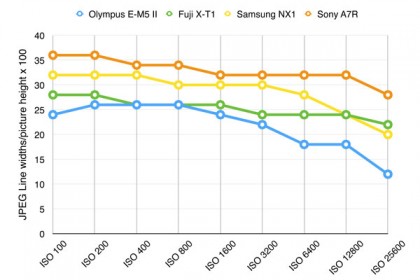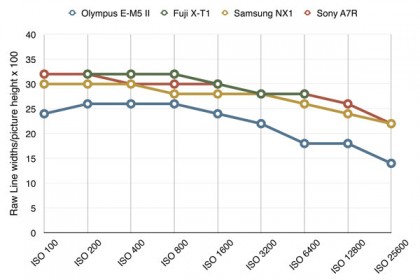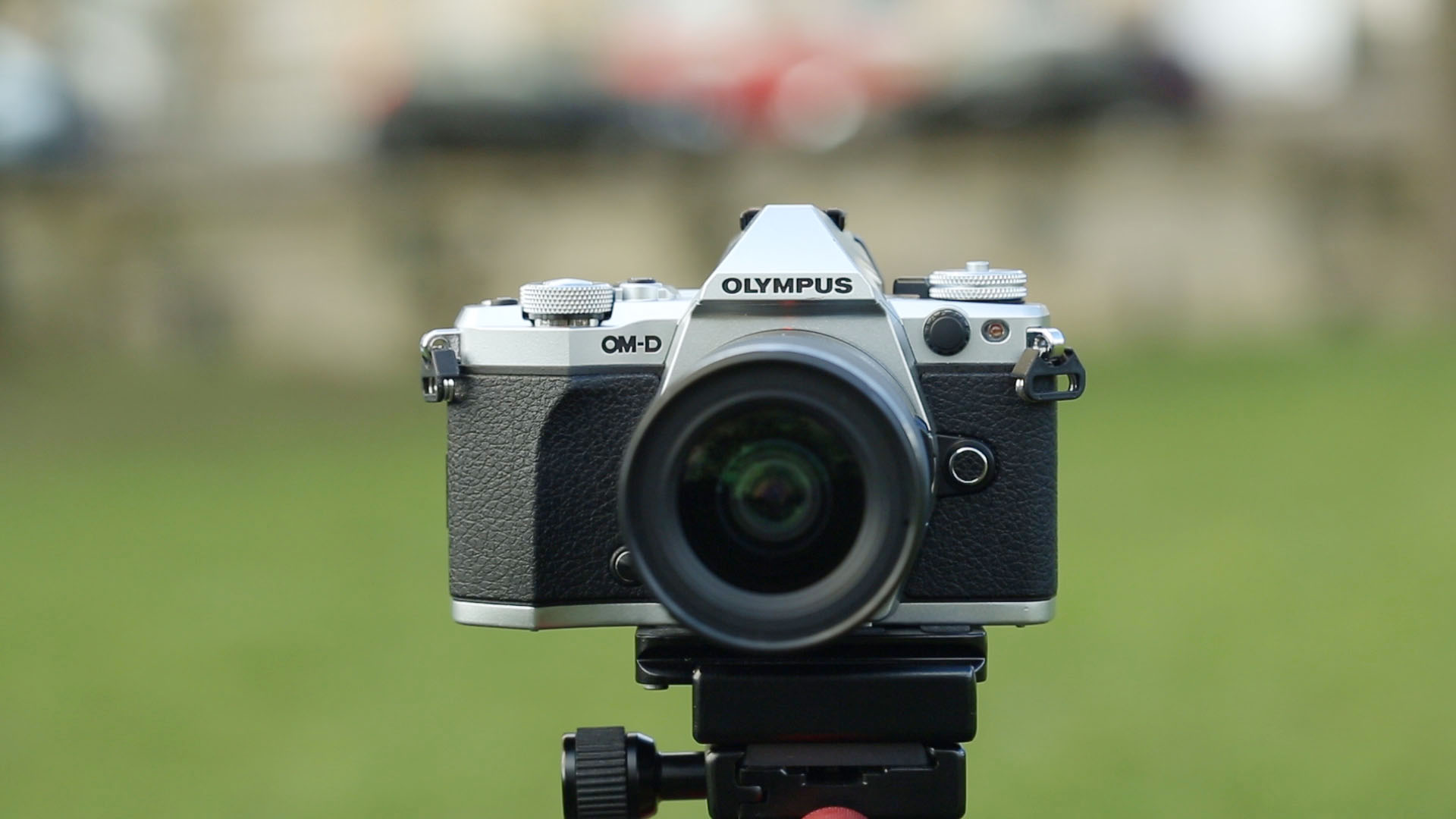Why you can trust TechRadar
We've carried out lab tests on the Olympus OM-D E-M5 II across its full ISO range for resolution, dynamic range and noise (signal to noise ratio). We test the JPEGs shot by the camera, but we also check the performance with raw files. Most enthusiasts and pros prefer to shoot raw, and the results can often be quite different.
We've also picked out three of its chief rivals so that you can compare their performance directly.
The rivals we've chosen are:
Fuji X-T1: another highly-popular DSLR-style compact system camera amongst enthusiasts, and a direct rival for the OM-D E-M5 II.
Samsung NX1: the highest resolution APS-C format compact system camera, and the best AF system.
Sony A7R: The Sony's full-frame sensor should trump the rest, but is this advantage enough on its own to affect your choice?
We test camera resolution using an industry-standard ISO test chart that allows precise visual comparisons. For a full explanation of what our resolution charts mean, and how to read them, check out our camera resolution test process.
Examining images of the chart taken at each sensitivity setting for both JPEG and raw files reveals the following resolution scores in line widths per picture height x100:

Analysis: Interestingly, the resolution figures deliver exactly the results you might expect when comparing different megapixel ratings and sensor sizes. The OM-D E-M5 has the smallest sensor and lowest resolution in this group, though this is not the only factor affecting overall image quality, and it fares much better in the dynamic range and signal to noise ratio comparisons.

Analysis: The same story is repeated with the raw results. The E-M5 II's resolution lags a little way behind its larger-sensor rivals at low-medium ISO settings, and falls away further at higher ISOs.
Current page: Lab tests: Resolution
Prev Page General performance Next Page Lab tests: Olympus E-M5 II vs Nikon D810